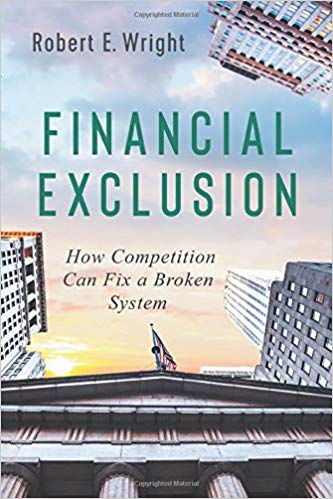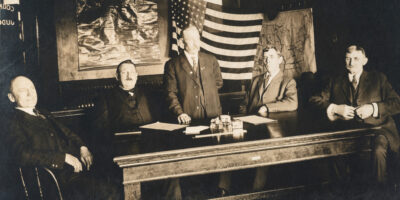Competition Is the Path to Financial Inclusion
“Financial inclusion is a crucial element,” writes Sunil Kapadia of Koneru Lakshmaiah Education Foundation, “in the fight against poverty” and even, in the context of modern India, “slavery.” Moreover, people excluded from financial services cannot contribute much to economic growth or development because they cannot scale their innovations and, in fact, have little incentive to innovate in the first place. I concur, and in fact made identical arguments in my two most recent books, Poverty of Slavery and Financial Exclusion, one of many worthy titles published recently by AIER. In this light, social justice and economic growth and development are not inimical but mutually reinforcing.
How, then, can a society increase financial inclusion and hence the welfare of all? Governments can mandate inclusion or, to maintain a facade of freedom, merely encourage it with stick and carrot, as the U.S. government did in the 1990s when it deregulated banking and subsidized mortgage markets while simultaneously allowing community action groups to leverage social pressure and the Community Reinvestment Act to chastise bankers who insisted on maintaining traditional lending standards.
The results of that policy – the housing bubble and subprime mortgage crisis, massive bailouts, and failure permanently to increase homeownership rates – were discouraging to say the least, though easily predicted by anyone skeptical of the efficacy of central planning.
An alternative way to increase financial inclusion – competition – served America well for most of its history. Relatively easy entry into financial service provision was no panacea, but it allowed creditworthy members of socially marginal groups to obtain crucial financing.

Nevertheless, over half of the African-American agriculturalists Eutsler interviewed had mortgages on their land, at pretty much the same rate of interest, 6 percent, as other North Carolina mortgagors with the same LTV (loan-to-value), which for blacks averaged 38 percent, intriguingly 8 percentage points higher than the average for white borrowers. Moreover, two in five, three in five, and one in two of those descendants of slaves were able to obtain various types of short-term loans for seed, fertilizer, and consumption goods, respectively.
Competition made that financing possible. Racially-biased Federal Farm Loan Banks and credit unions were not the only sources of loans. Although those intermediaries generally excluded African-American borrowers, individual lenders, insurers, commercial banks, and building and loan associations stepped up to supply the credit “necessary for effective production.”
Moreover, one African American-run farm loan association formed, in 1918, and, though small, met success. African American-run credit unions, by contrast, all soon failed due to an “ignorance of business methods” and “lack of leadership.”
Eutsler found that those African-Americans who did not borrow did not need to, or were deemed uncreditworthy by all lenders, including their own neighbors, and hence were not excluded from borrowing due to “exploitation along racial lines.”
To the extent that African-American agriculturalists borrowed too much, or paid too much for funds, Eutsler blamed the borrowers themselves for having “little understanding of the credit situation and the wise use of credit,” which he ultimately, and correctly, pinned on deficiencies in North Carolina’s separate and unequal public educational system.
Today, a general dearth of economic literacy helps to explain why more people do not form their own financial institutions when they meet discrimination in the marketplace. Few receive a proper economic education before college, and most not even then. It is bloody difficult to imagine oneself an entrepreneur, much less a financial entrepreneur, when one knows none personally, and those depicted in school and in the media meet vilification at every turn.
But as I explain in Little Business on the Prairie, states, like South Dakota, which still have large numbers of entrepreneurs and systematically teach entrepreneurship in middle and high school point to a pathway out of this conundrum. In fact, South Dakota’s entrepreneurship curriculum may explain the uncanny ability of its 12th grade students to score near the top of the nation on standardized reading and mathematics tests although their teachers are paid less on average than teachers in most other states (The Mount Rushmore state long ranked dead last in teacher salaries, but in the last year skyrocketed to fourth from the bottom.).
Public schools seem to understand one thing: Teach it, and they will become. So many teach infantilizing dogmas and churn out statist snowflakes instead of economically literate, independent thinkers willing and able to turn discrimination into profit, and social justice into wealth.
And of course it doesn’t help that financial regulators appear to fear the creation of a few, small experimental entrants, like The Narrow Bank, more than they fear the failure of the nation’s many, uber-risky megabanks. If regulators suspect discrimination, they need to encourage the formation of self-help institutions and not force or cajole incumbents into taking on yet more risk.











